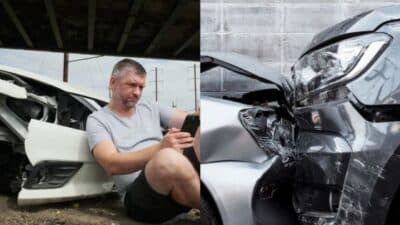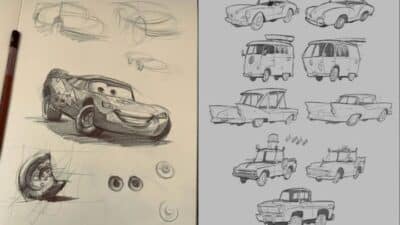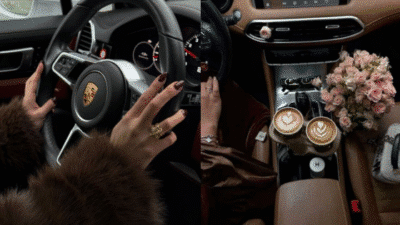Car design drawing concepts combine artistic expression with technical precision, shaping the look and function of every vehicle you see on the road. Understanding the fundamentals of drawing proportions, using the right tools, and applying key techniques can help you bring your own creative car concepts to life. Whether you’re interested in sketching classic designs or exploring futuristic ideas, these concepts form the foundation for all great automotive art.
You’ll find that modern trends and advancements in mobility are pushing designers to think in new ways, from urban microcars to sustainable vehicles. As you explore these principles, you’ll discover how ideas move from initial sketches all the way to production, highlighting the skill and vision behind each car’s creation.
Key Takeaways
- Learn the basics of car design drawing for stronger concepts
- Discover useful techniques and tools for car sketching
- See how ideas evolve from sketches to real vehicles
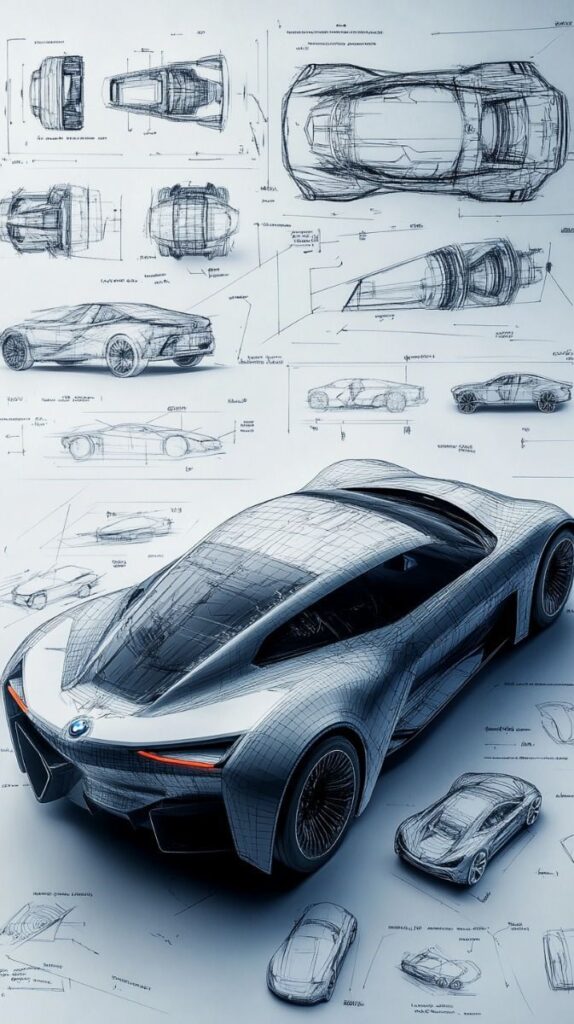
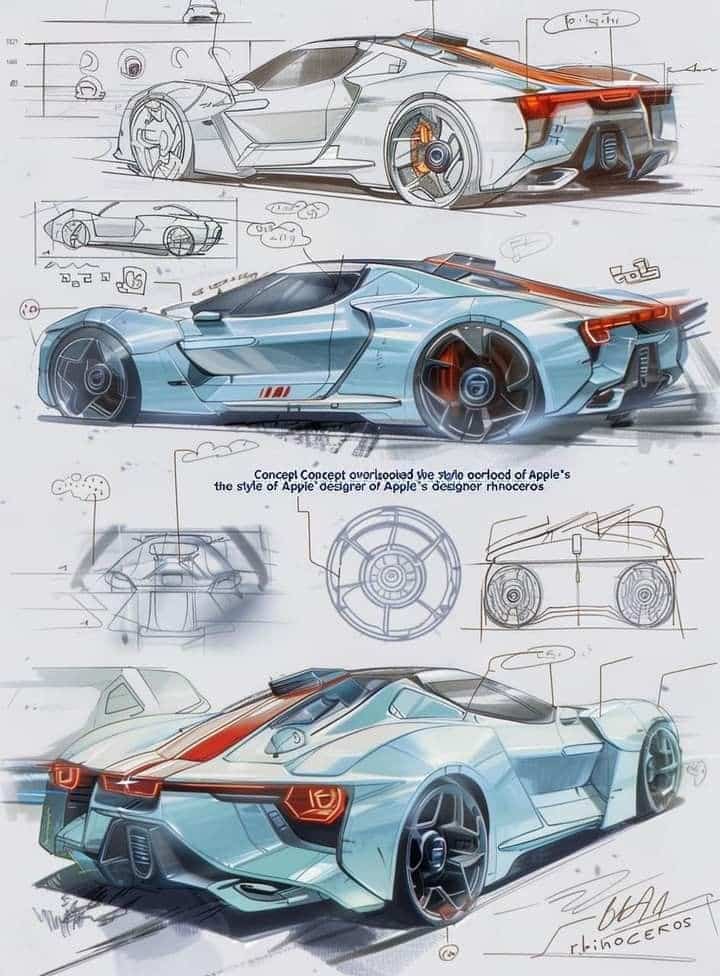
Fundamentals of Car Design Drawing Concepts
Accurate car design drawings lay the groundwork for consistent and appealing automotive forms. Paying attention to proportion, basic sketching techniques, and the most significant design features will help you produce sketches that clearly communicate your ideas.
Understanding Proportions
Proportions are fundamental in automotive design. Getting the length, width, and height relationships correct ensures your cars look realistic and professionally designed.
Start by familiarizing yourself with common measurements such as wheelbase, overall body length, and the height of the greenhouse (roof area). Use reference tables or diagrams to compare these dimensions for various vehicle types.
A typical approach is to use the wheels as a unit of measurement. For example, a sports car often measures about 4 to 4.5 wheel diameters between axles. This method helps you maintain balance and prevents accidental distortion of the car’s silhouette.
Careful placement of elements, like the position of the cabin relative to the wheels, is essential for a natural and dynamic look. Mapping out the major reference lines—ground level, beltline, and roofline—also strengthens the overall structure.
Sketching Basics
Developing strong sketching fundamentals is essential in automotive design. Begin with light lines and basic shapes to map the vehicle’s core volumes before adding details.
Use a variety of line weights by adjusting pressure on your pencil or stylus. Thicker lines can define the car’s outer edges, while thinner lines are best for surface details and smaller components.
Understanding simple perspective is key. Practice drawing cars in three-quarters view; this angle reveals more of the design and allows for better visualization of shapes and surface transitions.
Shading techniques help represent curves and surfaces. Differentiating areas in light and shadow can make your drawings look more three-dimensional and realistic.
Key Features in Car Design
Focus on the major elements that define the personality and identity of a car. Features such as the headlight and tail lights are not just functional, but also signature design points in modern vehicles.
Keep grille shapes, window outlines, and side mirror placement proportional and integrated with the overall body. List of essential elements to highlight:
- Headlight shapes and positions
- Grille style and size
- Window frame lines (A-, B-, and C-pillars)
- Tail light layout
Pay special attention to how these features interact with the car’s basic shape. Clear, confident linework brings out the function and style of each, ensuring your design communicates both form and intent.
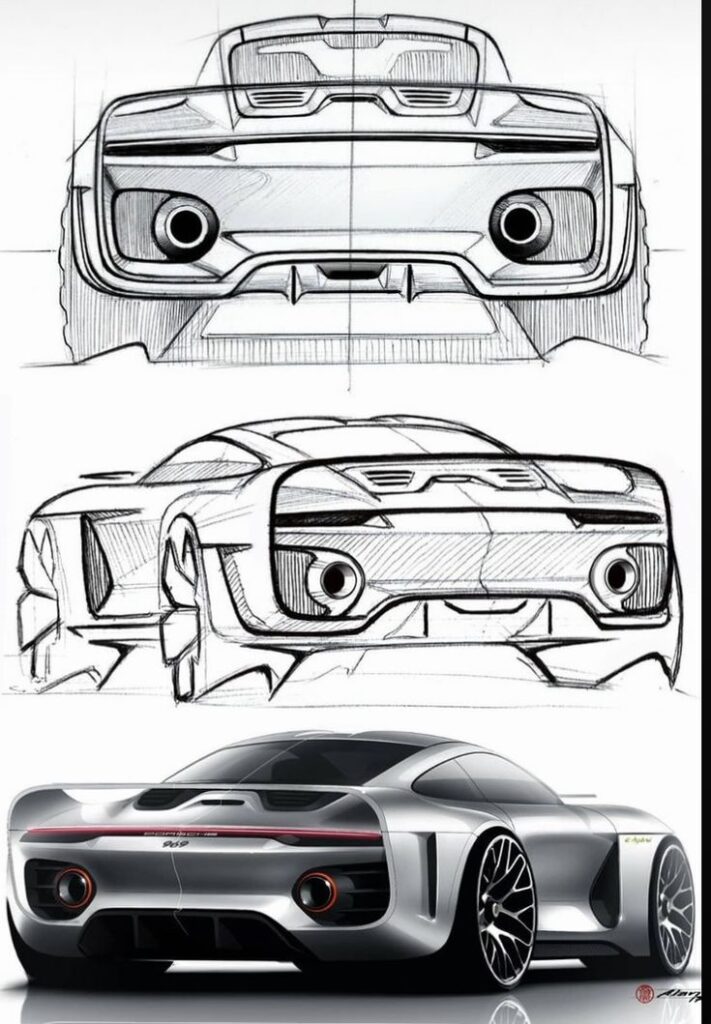
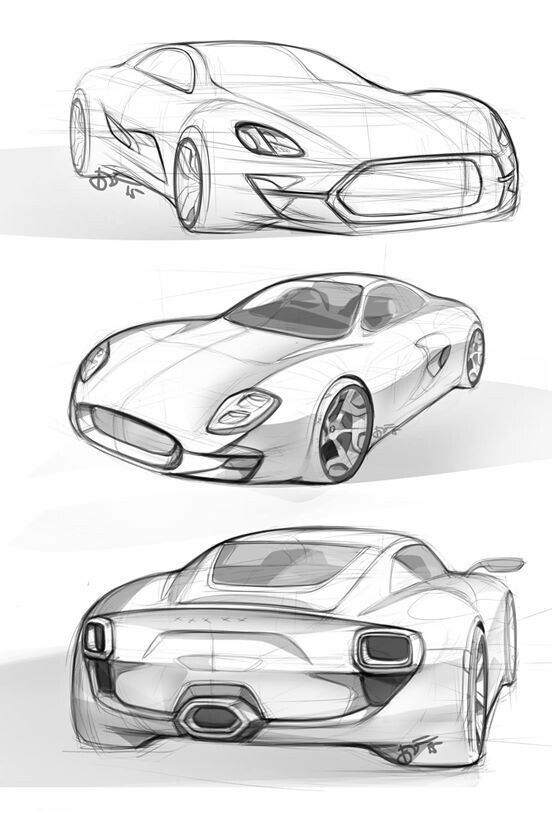
Essential Tools and Techniques for Sketching Cars
Accuracy in car design drawing depends on mastering foundational forms, selecting the right media, using design software, and leveraging digital illustration tools. These concepts equip you to create proportionate, professional sketches that align with modern automotive industry standards.
Using Cylinders and Other Basic Forms
Starting a car sketch with basic shapes like cylinders, bricks, and rectangles offers a solid foundation for accurate proportions. Cylinders are especially crucial for visualizing wheels and understanding the three-dimensional stance of the vehicle.
To build the vehicle structure, block out the main body using rectangles and bricks, then define details such as the fenders and cabin with ellipses and curved lines. Use basic geometric forms to map out perspective, ensuring symmetry and alignment.
This process reduces errors early in your sketch, as it allows you to quickly judge the car’s width, height, and overall presence on the page. Practicing these forms not only helps beginners but remains essential even for seasoned designers.
Traditional and Digital Media
Traditional sketching uses tools like pencils, fine-liners, markers, and specialized automotive design books for reference. Different leads (soft for shading, hard for precise lines) let you establish contrast and depth.
Markers and inked lines highlight body contours and give your sketch a dynamic appearance. Quality paper and templates, like ellipse guides for wheels, enhance the clarity and accuracy of your work.
Digital media introduces drawing tablets and stylus-equipped devices that closely mimic the tactile experience of paper. Digital sketches allow for quick corrections, easy layering, and fast exploration of variations. Using both traditional and digital methods helps you refine your workflow.
Introduction to CAD Software
CAD software such as Autodesk Alias or Rhino is essential in the car design industry. It transforms two-dimensional sketches into accurate, editable 3D models, helping you address proportional issues before physical models are built.
These applications support advanced features like parametric modeling, surface trimming, and curvature analysis. Learning CAD software allows you to transition your ideas from paper into engineering-ready formats used throughout the automotive field.
Familiarize yourself with basic navigation, toolsets, and surface manipulation. Even introductory skills in CAD will make you a more versatile designer and help communicate your concepts with engineering teams.
Photoshop Techniques for Car Design
Adobe Photoshop is a popular choice for refining car sketches and rendering detailed concepts. Use layers to organize design elements—keeping wheels, body, and reflections separate helps maintain flexibility as you refine the design.
Explore digital brushes to simulate marker rendering, create highlights, and shade metallic surfaces. Adjustment layers let you alter color schemes and experiment with lighting scenarios without starting over.
Selection and transformation tools allow you to make precise adjustments to proportions, wheels, or perspective. With practice, Photoshop becomes an invaluable part of your design process, especially for client presentations and portfolio development.
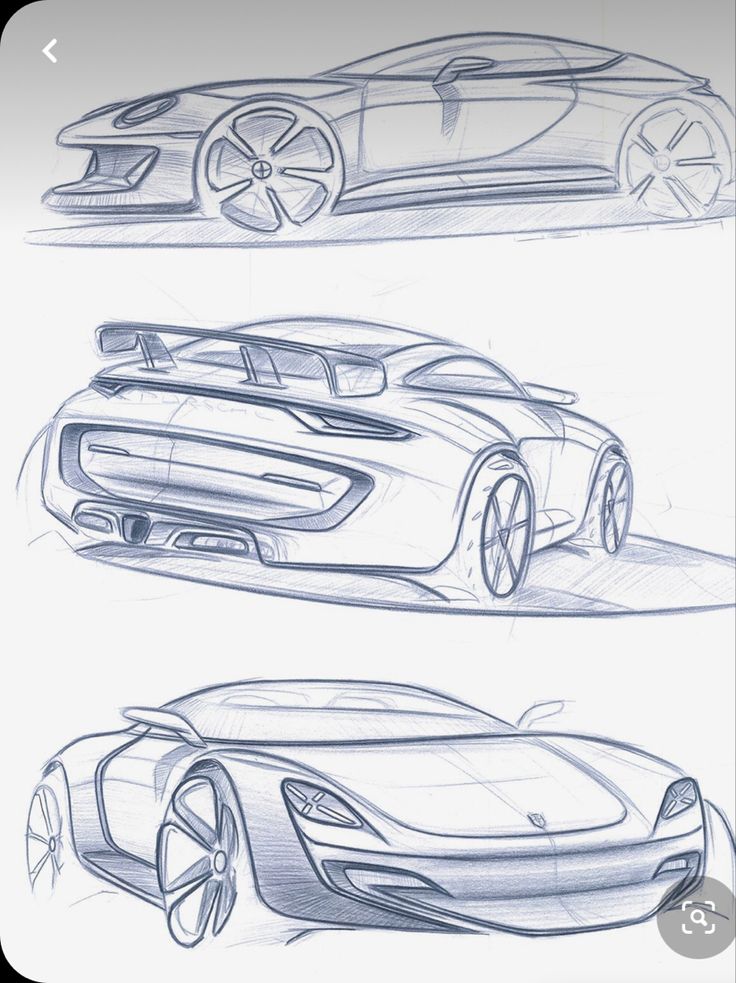
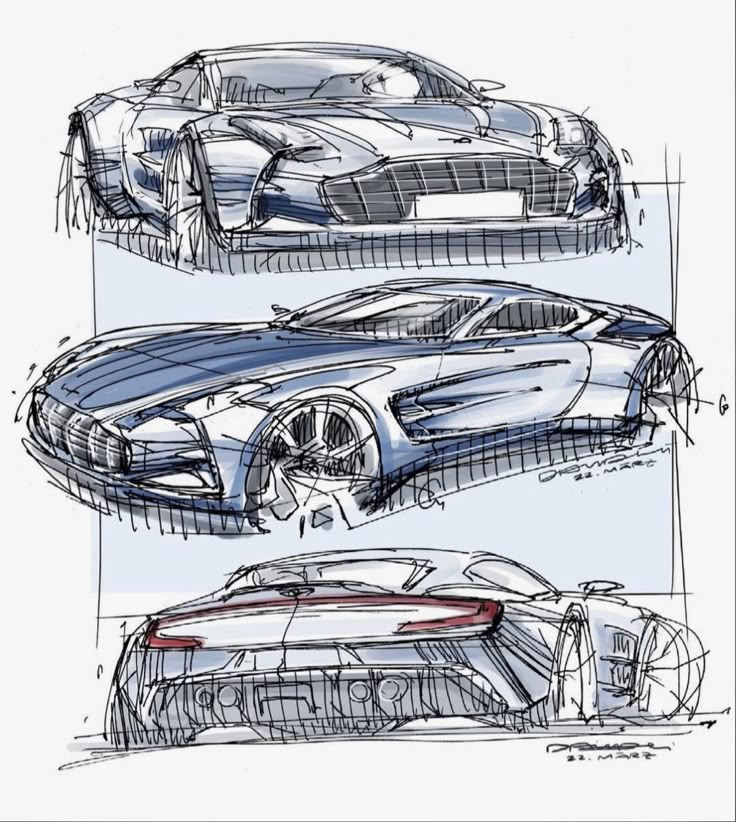
Modern Trends and Innovative Car Design Concepts
Contemporary car designs prioritize not only visual appeal but also technological advancements and environmental responsibility. Current concepts are shaped by demands for efficiency, safety, and distinctive aesthetics.
Sleek Lines and Aesthetic Appeal
Modern car design emphasizes sleek lines and fluid profiles that reduce drag and improve both performance and efficiency. You’ll notice sharp contours and smooth surfaces that create an impression of continuous motion, even when the car is at rest.
Designers often blend futuristic materials and colors to highlight the car’s silhouette. Narrow LED lighting, floating roofs, and minimalist grilles are commonly used to establish a bold, modern look.
Key visual features found in trending car concepts:
- Tapered front and rear
- Flush door handles
- Glass roof panels
These choices don’t just enhance aesthetics—they often serve aerodynamic and structural functions that contribute to overall performance.
Advanced Safety Features Integration
Advanced safety features are now an essential part of car design drawings. Your concepts will likely incorporate integrated sensors, lidar units, and radar systems hidden within the bodywork to preserve the car’s clean lines.
Smart driver-assist technologies like adaptive cruise control, automatic emergency braking, and blind-spot monitoring are influencing both exterior and interior layouts. Placement of sensors and cameras can affect roof shapes, bumper designs, and mirror configurations.
Commonly integrated safety systems:
- 360-degree cameras
- Lane-keep assist modules
- Collision detection sensors
Seamless integration of these technologies ensures that both safety and appearance remain uncompromised in your design.
Fuel Efficiency and Zero Emissions
Eco-friendly thinking is a major influence in modern car concept drawings. Designs focus on fuel efficiency and supporting zero-emission technologies, such as electric or hydrogen drivetrains.
You may see streamlined underbodies, active aerodynamic devices, and lightweight construction materials such as carbon fiber composites. Battery placement and cooling systems can directly impact chassis forms and space planning.
Key efficiency elements in car design:
| Feature | Benefit |
|---|---|
| Aerodynamic wheels | Reduce rolling resistance |
| Regenerative braking | Recaptures braking energy |
| Solar panel integration | Supplementary power source |
Adopting these approaches helps reduce emissions and ensures compliance with increasingly strict global regulations.
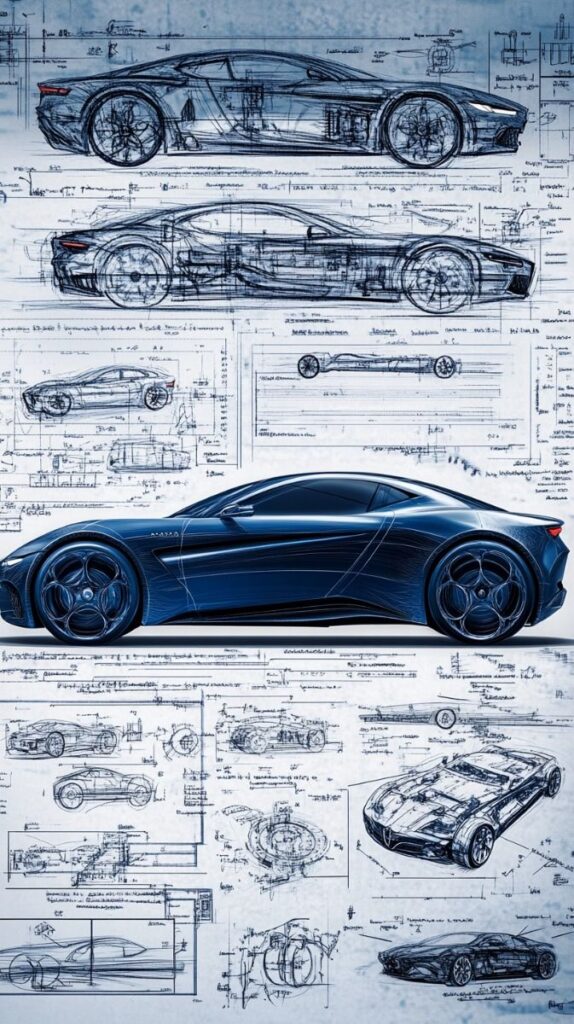
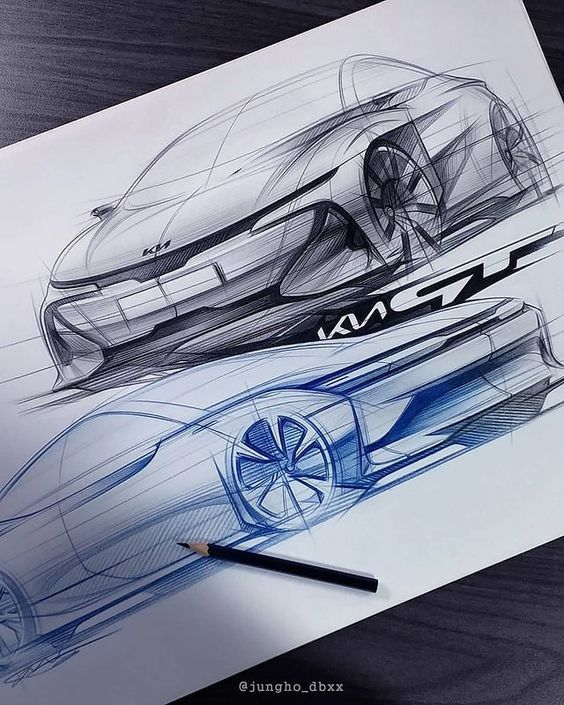
Specialized Concepts: Urban and Future Mobility
Urban and future mobility car designs demand innovative solutions that address space, sustainability, and the integration of technology into daily life. You’ll encounter unique challenges, such as compact city streets or the engineering of vehicles that can both drive and fly.
Designing for Urban Environments
Designing for urban environments means developing compact, maneuverable vehicles that handle tight spaces and heavy traffic.
You need to think about features like small turning radii, strong visibility, and advanced safety systems such as automatic braking. Electric propulsion is often favored, helping to reduce urban emissions and noise.
Key considerations include:
- Efficient use of interior space
- Easy ingress and egress for passengers
- Connectivity for traffic and navigation systems
Many concepts, like the Arcade vehicle, explore modular elements—allowing a single platform to serve multiple purposes, from personal commuting to small-scale goods delivery. Use of lightweight materials and a focus on sustainability is increasingly central.
Flying Car Concept Development
Flying car concept development shifts your focus to vehicles that operate in both air and on traditional roads.
You must consider aerodynamics, vertical take-off and landing (VTOL) capabilities, and strict weight requirements. Advanced propulsion methods—such as hybrid-electric or all-electric powertrains—are often explored to minimize environmental impact.
Designs typically use retractable wings, compact rotors, or tilt-rotor systems. Attention to automated flight controls, sensor integration, and comprehensive safety mechanisms is crucial, especially for safe operation in crowded urban airspace.
Developing these concepts also means evaluating regulatory frameworks and airspace integration. Prototypes often include redundancy in flight systems and clear user interfaces to simplify piloting for everyday users.
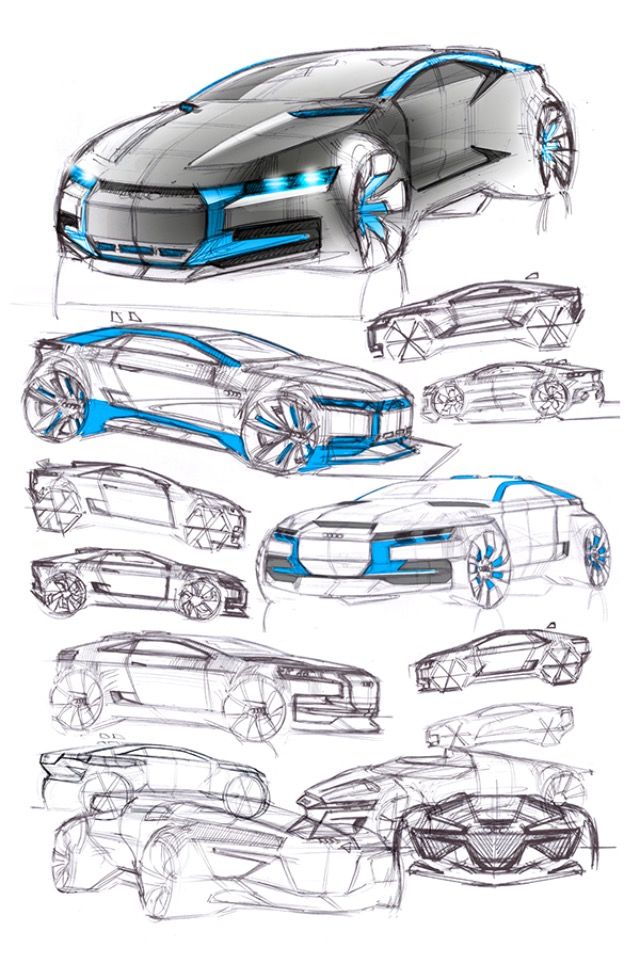
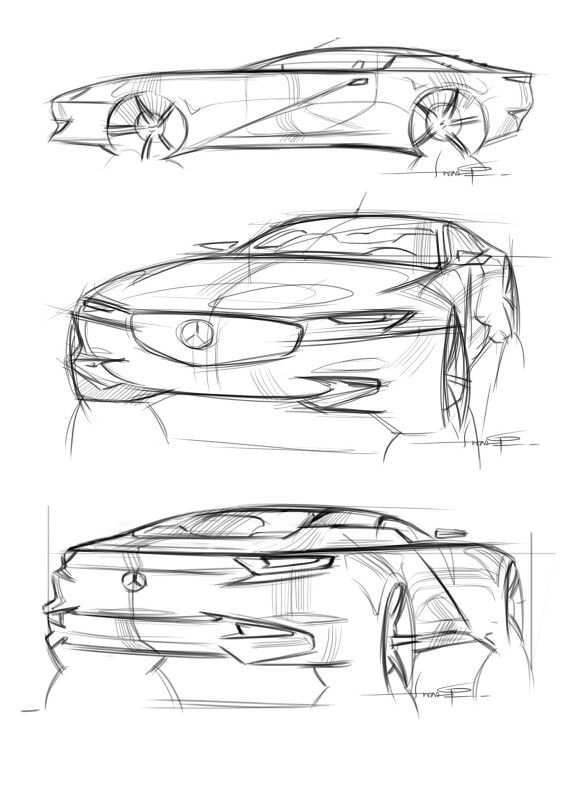
From Drawing Board to Production
Car design goes far beyond sketches and renderings. The journey from a concept drawing to a finished vehicle involves detailed planning, advanced technology, and collaboration across departments.
Role of Manufacturing in Car Design
Manufacturing is integral to shaping how a car transitions from concept to reality. Every design decision you make must account for production feasibility, material selection, and tooling limitations. Early involvement of manufacturing teams helps identify potential challenges, ensuring that the drawn concept adheres to budget, safety, and timing constraints.
You need to keep in mind how your design will be assembled on the production line. Choices like weld points, part modularity, and standardized components can simplify manufacturing and reduce costs. Strict industry timelines mean new models—especially those on all-new platforms—often need three to five years from initial design to market.
A close link between design and manufacturing enables efficient problem-solving, reduces the risk of costly redesigns, and leads to a smoother process overall.
Bridging Concept and Reality with Innovative Technology
Innovative technology plays a crucial role in translating your sketches into production-ready designs. Advanced CAD (computer-aided design) and simulation tools allow you to visualize, refine, and test components before any physical prototypes are built. This reduces errors and streamlines the verification process.
Digital modeling, VR (virtual reality), and rapid prototyping technologies—such as 3D printing—help you move quickly from abstract concepts to tangible models. These tools enable cross-functional teams to spot issues early and implement changes efficiently. Engineers can simulate aerodynamics, crash behavior, and ergonomics right from their desktops.
The integration of these technologies not only saves time but also lowers development costs. You benefit from more precise modeling, faster feedback, and a more predictable transition to manufacturing.
Using API in Design Collaboration
APIs (Application Programming Interfaces) have become valuable tools in automotive design teams. They enable seamless integration across software platforms, data sources, and even different departments, making real-time collaboration possible. Using APIs, you can synchronize model files, update parts lists, and track changes without manual intervention.
Designers, engineers, and manufacturing planners often rely on APIs to link CAD software with project management, procurement, and simulation tools. This automated data exchange reduces duplication and miscommunication. It also supports version control, so everyone works with the latest information.
By incorporating APIs into your workflow, you reduce bottlenecks and help ensure that the entire team remains aligned throughout the development cycle. This results in fewer delays and more consistent outcomes from drawing board to finished car.
- 539shares
- Facebook0
- Pinterest536
- Twitter3
- Reddit0

